Bloodbath is a Swedish death-metal group from Stockholm.
Contents
Bloodbath may also refer to:
Bloodbath is a Swedish death-metal group from Stockholm.
Bloodbath may also refer to:

The Kalmar Union was a personal union in Scandinavia, agreed at Kalmar in Sweden as designed by widowed Queen Margaret of Norway and Sweden. From 1397 to 1523, it joined under a single monarch the three kingdoms of Denmark, Sweden, and Norway, together with Norway's overseas colonies.

The Stockholm Bloodbath was a trial that led to a series of executions in Stockholm between 7 and 9 November 1520. The event is also known as the Stockholm massacre.

Sten Sture the Younger, was a Swedish nobleman who served as the regent of Sweden, during the era of the Kalmar Union.
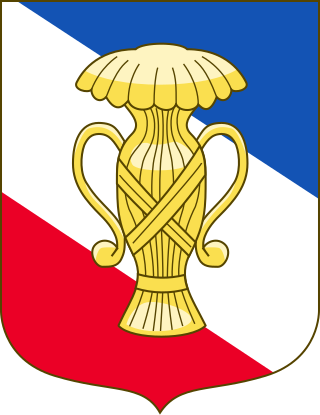
The House of Vasa or Wasa was an early modern royal house founded in 1523 in Sweden. Its members ruled the Kingdom of Sweden from 1523 to 1654 and the Polish–Lithuanian Commonwealth from 1587 to 1668; its agnatic line became extinct with the death of King John II Casimir of Poland in 1672.

The early Vasa era is a period in Swedish history that lasted between 1523–1611. It began with the reconquest of Stockholm by Gustav Vasa and his men from the Danes in 1523, which was triggered by the event known as the Stockholm Bloodbath in 1520, and then was followed up by Sweden's secession from the Kalmar Union, and continued with the reign of Gustav's sons Eric XIV, John III, John's son Sigismund, and finally Gustav's youngest son Charles IX. The era was followed by a period commonly referred to as the Swedish Empire, or Stormaktstiden in Swedish, which means "Era Of Great Power".

Christina Nilsdotter Gyllenstierna of Fogelvik was a Swedish noblewoman. She was married to the Swedish regent Sten Sture the Younger, and led the Swedish resistance against Christian II of Denmark after the death of her spouse. In her own lifetime she was simply referred to as Fru Kristina, but she has become known in history as Kristina Gyllenstierna because of the house of nobility to which she belonged.
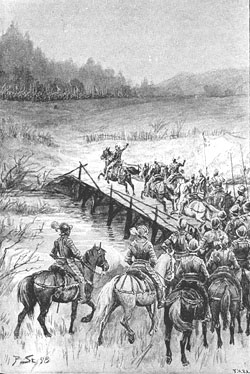
The Battle of Stångebro, or the Battle of Linköping, took place at Linköping, Sweden, on 25 September 1598 (O.S.) and effectively ended the personal union between Sweden and the Polish–Lithuanian Commonwealth, that had existed since 1592. In the battle, an army of c. 8,000–12,000 commanded by Duke Charles defeated a mixed force of c. 5,000–8,000 consisting of an invading army of mercenaries in the king's employ and diverse but poorly co-ordinated supporting Swedish noblemen's forces commanded by King of both Sweden and the Polish–Lithuanian Commonwealth Sigismund III Vasa, who was acting to maintain and restore his personal union against anti-Catholic forces in Lutheran Sweden. The Swedish king's general Constantin fought at the western bridge.
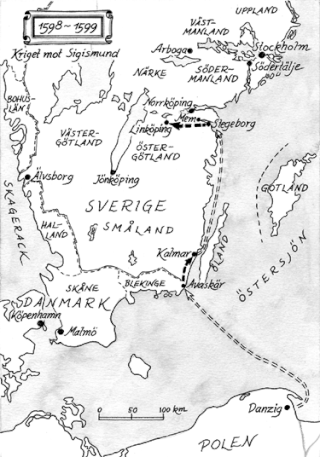
The war against Sigismund was a war between Duke Charles, later known as King Charles IX of Sweden, and Sigismund, who was at the time the king of both Sweden and the Polish–Lithuanian Commonwealth. Lasting from 1598 to 1599, it is also called the War of Deposition against Sigismund, since the focus of the conflict was the attempt to depose the latter from the throne of Sweden. The war eventually resulted in the deposition of Sigismund, the dissolution of the Polish–Swedish union, and the beginning of an eleven-year war.

Gustav Eriksson Trolle was Archbishop of Uppsala, Sweden, in two sessions, during the turbulent Reformation events.
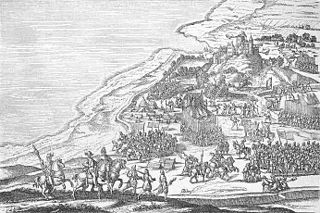
The Northern Seven Years' War was fought between the Kingdom of Sweden and a coalition of Denmark–Norway, Lübeck, and Poland–Lithuania between 1563 and 1570. The war was motivated by the dissatisfaction of King Frederick II of Denmark with the dissolution of the Kalmar Union, and the will of King Eric XIV of Sweden to break Denmark's dominating position. The fighting continued until both armies had been exhausted, and many men died. The resulting Treaty of Stettin was a stalemate, with neither party gaining any new territory.

Kalmar Castle is a castle in the city Kalmar in the province of Småland in Sweden.
The Military timeline of Denmark is centered around an involvement in wars in Northern Europe since 793 and, recently, elsewhere.

Erik Johansson Vasa was a Swedish noble and the Lord of Rydboholm Castle in Roslagen. His son would rule as King Gustav I of Sweden from 1523–1560.

The Linköping Bloodbath on 20 March 1600 was the public execution by beheading of five Swedish nobles in the aftermath of the War against Sigismund (1598–1599), which resulted in the de facto deposition of the Polish and Swedish King Sigismund III Vasa as king of Sweden. The five were advisors to Catholic Sigismund or political opponents of the latter's uncle and adversary, the Swedish regent Duke Charles.
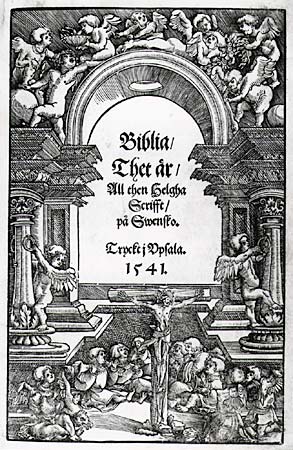
The Reformation in Sweden is generally regarded as having begun in 1527 during the reign of King Gustav I of Sweden, but the process was slow and was not definitively decided until the Uppsala Synod of 1593, in the wake of an attempted counter-reformation during the reign of John III (1568–1592).

Events from the year 1564 in Sweden
Events from the year 1599 in Sweden

The Kalmar Bloodbath, sometimes described as the Second Kalmar Bloodbath to distinguish it from an earlier massacre in the same place, was the public mass execution of 22 men in Kalmar, Sweden, on 16 May 1599. All of the victims were members of the garrison from Kalmar Castle, and included three noblemen and a priest, all four of whom were beheaded. The other eighteen victims, comprising secretaries, garrison officers and mercenary commanders, were all hanged.

The Kalmar Bloodbath, sometimes described as the First Kalmar Bloodbath to distinguish it from a later massacre in the same location, was a politically motivated mass execution that was carried out in Kalmar, Sweden, on July 2, 1505, immediately after a conviction of treason and a sentence of death had been pronounced against participants in the Swedish Uprising against the Danish ruler, King Hans.
Ronneby Bloodbath was a massacre conducted by the Swedish army in the then-Danish city of Ronneby in Blekinge during the Northern Seven Years' War on Monday, 4 September 1564.